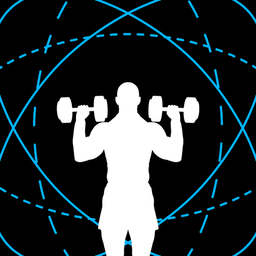Not Losing Weight? It Might Be Your Slow Metabolism at Fault
We said you didn't have to worry about a slow metabolism. Um, we were wrong. Learn why and, more crucially, how that affects you in this article.

You know that stomach-churning, nauseating feeling you get when you admit you were wrong? Your heart races. Your hands get unbelievably clammy. And you quite literally wish a gaping hole would appear on the ground — and swallow you up.
Yeah, that’s us right now.
Because it turns out, we were wrong (terribly, embarrassingly so! 🫣) when we said that you likely don’t have to worry about a slow metabolism here.
More details below.
Oh, look who changed their stance 👀
First things first. Let’s all get on the same page.
This is the meaning of a "slow metabolism": your body burns fewer calories than expected based on several factors, including body fat percentage, activity levels, age, and biological sex.
Now, barring certain endocrine disorders (e.g., hypothyroidism or Cushing’s syndrome), we used to believe that 2 individuals with the same:
- Height
- Weight
- Age
- Biological sex
- Body composition (i.e., BF%)
… would have the same Basal Metabolic Rate (BMR).
In other words, their bodies would burn the same number of calories at rest.
Welllllll.
Many studies evaluating BMR equations have thrown that sentiment into question:
👉 2019 study published in Applied Physiology, Nutrition, and Metabolism
👉 2023 study published in Metabolites
Without diving into the minutiae and risk boring you, the studies’ key finding was this: 2 individuals could have BMRs that differed by 450 to 1,300 daily — even if they were the same age, height, weight, BF%, etc.
What that essentially means is that someone with a “fast metabolism” could burn 1,300 more calories (that’s a whole-ass McDonald’s meal!) than another with a “slow metabolism” just by laying around all day.
At this point, you may have 1 word in your mind …
Why?
To understand that, we'll have to break down the components of your BMR:
- Skeletal muscle: 13 calories/kg
- Adipose (fat) tissue: 4.5 calories/kg
Did you think that was all? Nope.
You’ll also need to account for your internal organs, which burn far more calories per kg than your skeletal muscle or fat tissue. Every organ has a different BMR, so for brevity's sake, let's just bring up the kidney as an example.
Kidneys have a BMR of about 440 calories/kg.
So, doing some quick math, your kidneys are about 34x and 98x more metabolically active than your skeletal muscle and fat tissue, respectively.
Meaning?
Your internal organs — e.g., heart, kidneys, and brain — contribute the lion’s share to your BMR (~75%).
To further complicate things (as if they weren't already complicated enough), it appears that there can be sizeable inter-individual variability in 1) organ mass and 2) organ-specific BMRs, which would then impact BMR.
Side note: there may be other reasons you're having difficulty losing weight. Check them out here:

And this, in turn, begs the question: “But how would I know if my organs are on the smaller side of things? Or have a lower BMR?”
Slow metabolism signs and symptoms
The tricky thing is that there's no 100% accurate way to do so without undergoing an MRI and/or lab scan. That said, you might have reason to suspect your organs are less of a calorie-burning powerhouse than they're supposed to be if:
- Your healthcare provider clears you of any medical conditions known to cause a slow metabolism and
- You notice signs and symptoms of slow metabolism, notably unexpected weight gain and/or difficulty losing weight (even if you've been counting calories and exercising extremely diligently)
How to lose weight with a slow metabolism
OK. So, you suspect that you, unfortunately, have a slow metabolism.
Does it necessarily mean weight loss is impossible for you? Not at all. Yes, you may have a more challenging time shedding excess weight — but it’s by no means undoable.
Here's a step-by-step guide on how you could do so:
2️⃣ Eat at a 200-300 calorie deficit for a month.
3️⃣ Monitor your weight: how much weight are you losing? (On average, you should expect to lose 0.5 kg/ week.)
4️⃣ If you’re losing weight as expected or possibly more (lucky you!), you probably don’t have a slow metabolism. But if you’re losing weight slower than expected, find a sustainable way to widen your calorie deficit* by another 100-200.
5️⃣ Repeat steps 3 to 4 until you see your desired weight loss results.
*Here are a few ideas:
- Build your diet around whole, minimally processed foods with lots of fruits and vegetables. Prioritize high-volume, low-calorie foods where possible.
- Aim for a daily step count of 7,000 to 10,000 (an excellent way to keep your NEAT levels high).
- Include intentional cardio 2-3x a week.
- Implement these hunger management strategies.
- Make sure you strength train; while it doesn’t help you burn as many calories as cardio per session, resistance training helps you build muscle mass, which is crucial for appetite regulation (especially in a diet).
Don’t get discouraged by your slow metabolism
As with many things in life, you cannot control 1) the size of your organs, 2) their respective metabolic rates, and ultimately 3) your BMR.
But what you can control is your attitude. No, not this kind of attitude:
But instead, will you see it as just another obstacle you can overcome, or will you simply give up? Because it isn’t just your BMR that dictates your TDEE. There’s also your physical activity level (NEAT and EAT).
And even beyond that, there’s also the nutrition factor; as you probably already know, it's much easier not to eat a 1,000-calorie burger than to try to burn it off via exercise.
Ready to conquer your slow metabolism and achieve your weight loss goals?
Then, you'll appreciate the support GymStreak gives you.
Powered by AI, this smart workout + nutrition planner tailors your training and diet plan according to your needs and preferences, plus keeps you motivated over the long term so you successfully achieve your goals — slow metabolism be damned.
Workout Programming + Nutrition Tracking, Off Your Hands
*sigh of relief* We'll guide you through it all — step-by-step. Just download the app, and you'll be making progress toward your dream body like never before.
References
Amaro-Gahete, Francisco J., et al. “Accuracy and Validity of Resting Energy Expenditure Predictive Equations in Middle-Aged Adults.” Nutrients, vol. 10, no. 11, Nov. 2018, p. 1635. PubMed Central, https://doi.org/10.3390/nu10111635.
Molina, D. Kimberley, and Vincent J. M. DiMaio. “Normal Organ Weights in Men: Part I-the Heart.” The American Journal of Forensic Medicine and Pathology, vol. 33, no. 4, Dec. 2012, pp. 362–67. PubMed, https://doi.org/10.1097/PAF.0b013e31823d298b.
---. “Normal Organ Weights in Women: Part I-The Heart.” The American Journal of Forensic Medicine and Pathology, vol. 36, no. 3, Sept. 2015, pp. 176–81. PubMed, https://doi.org/10.1097/PAF.0000000000000174.
Pavlidou, Eleni, et al. “Revised Harris–Benedict Equation: New Human Resting Metabolic Rate Equation.” Metabolites, vol. 13, no. 2, Jan. 2023, p. 189. PubMed Central, https://doi.org/10.3390/metabo13020189.
Tinsley, Grant M., et al. “Resting Metabolic Rate in Muscular Physique Athletes: Validity of Existing Methods and Development of New Prediction Equations.” Applied Physiology, Nutrition, and Metabolism = Physiologie Appliquee, Nutrition Et Metabolisme, vol. 44, no. 4, Apr. 2019, pp. 397–406. PubMed, https://doi.org/10.1139/apnm-2018-0412.
Wang, ZiMian, et al. “Specific Metabolic Rates of Major Organs and Tissues across Adulthood: Evaluation by Mechanistic Model of Resting Energy Expenditure1234.” The American Journal of Clinical Nutrition, vol. 92, no. 6, Dec. 2010, pp. 1369–77. PubMed Central, https://doi.org/10.3945/ajcn.2010.29885.


